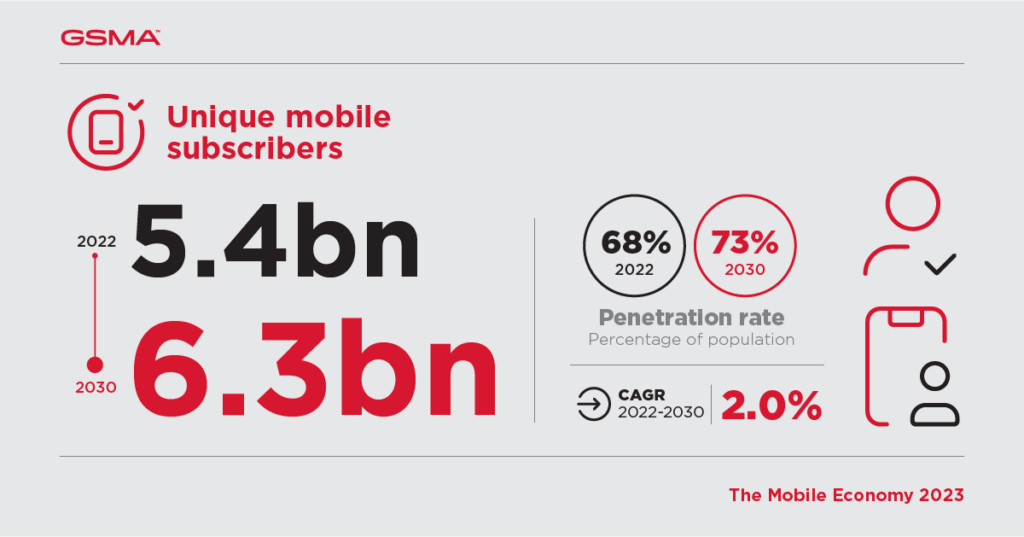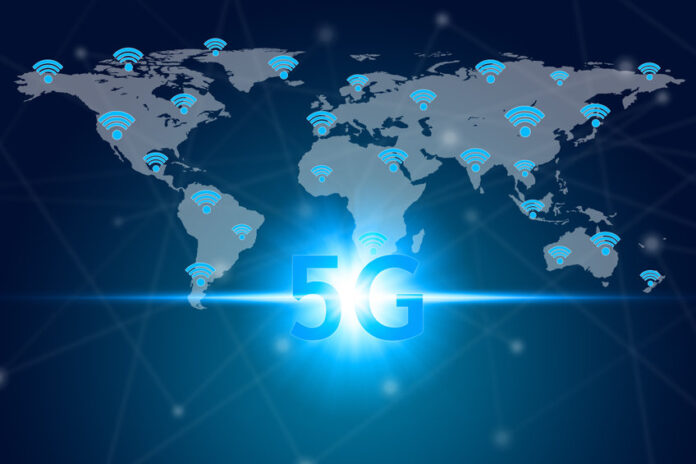New GSMA report looks at how many people have access to mobile broadband but do not use it
BARCELONA—You’ve heard of the digital divide, but how about the “usage gap”? In a new report from GSMA Intelligence, the usage gap in mobile internet refers to the difference between the percentage of the population which has used the internet on a mobile device, and those people who are within the footprint of a mobile network but haven’t used mobile internet. Comparatively, the “coverage gap” defines the small slice of the world population—about 5%, the GSMA says—which does not have mobile internet available at all.
The usage gap has “narrowed markedly in the last five years,” according to the GSMA report, dropping from about 50% in 2017 to 41% in 2022 on average. But, the organization noted, it “still remains significant and demands urgent attention from all stakeholders.”
GSMA Intelligence’s figures says that the gap is widest in sub-Saharan Africa, where barriers to mobile internet adoption include the lack of affordability and low levels of digital skills (not very different, it should be noted, than the hurdles to closing the digital divide in broadband in the United States—see the new RCR Wireless report “Getting to Ubiquity: The urban and rural digital divide” for a more thorough exploration.) The mobile broadband usage gap was the lowest in Europe (12%) and the United States (14%).
Despite the gap on mobile internet service penetration, however, the overall adoption curve for 5G is looking healthy. During a session at Mobile World Congress Barcelona, James Joiner, lead analyst for GSMA Intelligence, said that the organization expects 5G to continue outpacing 4G as the most rapidly adopted mobile technology, through the 2030 forecast period for the report. He highlighted figure from the report including:
-By 2030, the number of 5G connections is expected to hit 5 billion, up from around 1 billion today.
-There’s still a lot of life left in LTE. For all the fast growth, 5G isn’t expected to overtake LTE as the dominant mobile technology until 2029.

But beyond adoption—with consumer 5G service and device revenues solid, but replacing 4G rather than representing new revenues—service providers are putting new focus on how to make additional money off of their 5G investments.
“It’s the big question: How are they going to make money from 5G?” said Joiner. Some operators are seeing profits from 5G Fixed Wireless Access as a new service, notably T-Mobile US and Verizon in the United States. Others are dabbling in areas such as additional service fees for cloud gaming. Monetization is a major theme at this year’s MWC Barcelona: 5G is certainly here, and the industry’s technical minds are already eagerly anticipating 5G-Advanced and even future 6G systems. And operator expectations are high as well; the GSMA Intelligence report found that the majority of operators expect private wireless networks to eventually account for as much as 20% of their total enterprise revenues. That level of double-digit percentage of revenues hasn’t yet materialized–but, the immediate caveat that is offered on 5G monetization thus far is that the technology hasn’t reached its full potential, as 5G Standalone deployments are still the exception rather than the rule.
Still, as Ben Wood, chief analyst and CMO of CCS Insights, said during a panel discussion when 6G came up: “Do we need another G? Let’s get 5G making money for everyone.” Which will certainly be one of the hot topics under discussion this week in Barcelona.
For more on 5G monetization, see also the RCR editorial report: 5G—is it making (enough) money yet?

